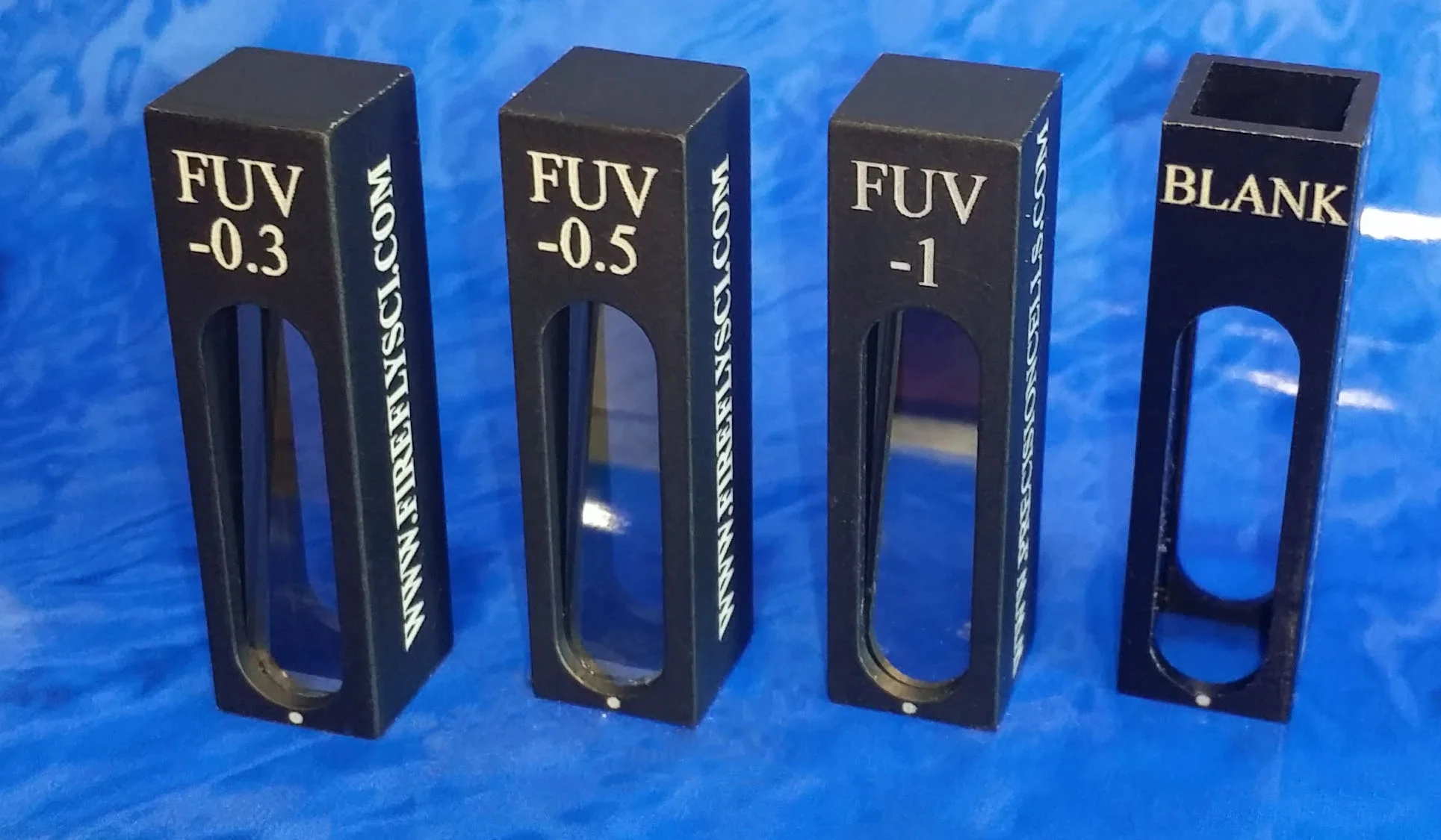Rare Shimadzu 16-Cell Microcuvette Available
/Shimadzu 16 chamber microcuvette
Everybody in the spectroscopy field knows that Shimadzu is one of the best manufacturers for UV-VIS spectrophotometers in the world. We’ve had the amazing opportunity to help manufacture the rare 16-cell and 8-cell microcuvette for Shimadzu. Now we are offering this cuvette on our website for all users.
Material for the Shimadzu Microcuvette
For the construction of this microcuvette, we use our highest end UV Quartz and our special black quartz. The UV quartz has a striking transmission range of 190-2,500 nm. This covers both your UV and VIS range. Having the black quartz built into this cell, helps reduce any light issues because it absorbs the light that is not totally focused at the sample chambers.
Lightpaths Available
Shimadzu has four different variations of these microcuvettes available. Here are the Shimadzu part numbers and the lightpaths:
- 220-92781-02 – 8 chambers with 5 mm lighpath
- 220-92404-00 – 8 chambers with 10 mm lightpath
- 208-92085-00 – 16 chamber with 5 mm lightpath
- 220-92403-00 – 16 chambers with 10 mm lightpath
Aside from the standard 5 mm and 10 mm microcuvette, we can also custom make this cell for any lightpath such as 1 mm, 2 mm, etc.
Loading Samples
There are many ways to load samples into these cuvettes. One tool that you absolutely need is a micropipette. The chamber width is 2 mm so you don’t want to use a large pipette or you can get sample all over the cell. Having the accuracy of a micro-pipette tip will help you disperse the sample into the correct chamber without any error.
When using the 16 chamber cell, we recommend going with a multi-tipped pipette to save time.
Cleaning the Shimadzu Microcuvette
The best way to clean the 8 or 16-cells is to soak them. The soaking solution will depend on what was tested in the cuvette. For most samples, you can rinse the cuvette in DI water and dry the cell using compressed air in a can. For harder to remove samples you can soak the cells in diluted sulfuric acid
For DNA and baked on proteins you’re going to need some tougher cleaning process. Here is a great way to remove those tough samples courtesy of Bernard Costello:
- Remove the sample.
- Rinse the cell with DI water. Multiple rinses may be needed.
- Rinse the cell with ethanol and blow dry the cell using compressed air.
- Completely soak the microcuvette in concentrated nitric acid. Caution must be used when using nitric acid.
- Soak the cell for 10 minutes or overnight for super tough buildup.
- Remove the cell from the nitric acid bath using stainless steel tweezers. Please use caution during this step not to scratch the optical surfaces.
- Rinse the cuvette with purified water, removing any excess acid.
- Rinse the cuvette with ethanol or acetone and blow dry.
- Clean the outside of the cell with a lint free cloth.
Other Microcuvette Products
For users who do not have the special Shimadzu holder for the 8 and 16-cell microchambers, we offer many other black and clear quartz microcuvettes that can be found at this link. The volumes range from 350 ul up to 7 ml.
For more information or questions about microcuvettes, please contact us.
Here’s to Your Success!
The FireflySci Team
![firefly_logo_FINAL [Black].jpg](https://images.squarespace-cdn.com/content/v1/5411d5c0e4b02e1c8b27565a/1434491508803-XB4OF7YDY46Z72L5U5AP/firefly_logo_FINAL+%5BBlack%5D.jpg)











